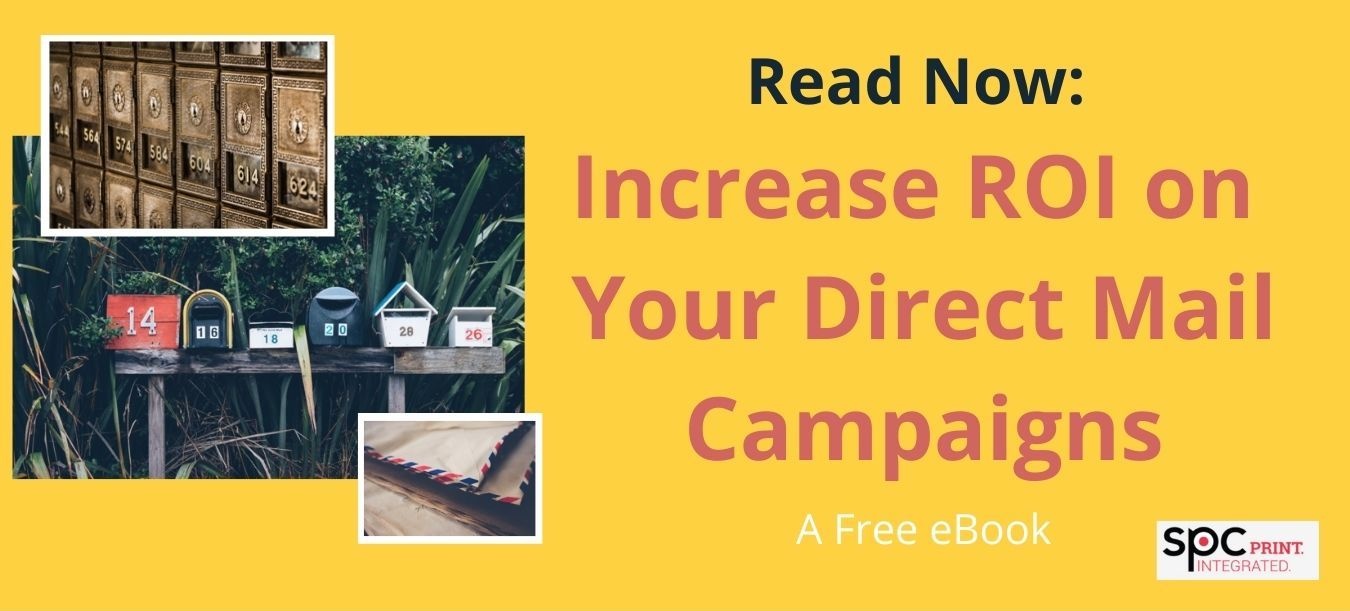Increase Engagement with Variable Data Printing
We’re bombarded with so much information these days that we often tune out everything that we don’t find personally relevant. With that in mind, if you want people to engage with your marketing content instead of just glance at it, you’ll have to get personal. In fact, according to the Aberdeen Group, 75% of consumers like it when brands personalize messaging and offers.
Not only do they prefer personalization, according to research by Segment, but 49% of consumers have purchased a product they did not initially intend to buy after having a personalized experience with a company. Plus, 44% are likely to become repeat buyers after a personalized experience. Further research conducted by Salesforce found that 52% of consumers are somewhat likely to switch brands if a company doesn’t provide enough personalization.
Incorporating personalization into your print marketing campaigns is not a difficult task these days. Before the magic known as variable data printing, or VDP for short, existed, if you wanted to send out personalized print, each piece of mail would have to be customized individually. As you can imagine, that is extremely time-consuming and expensive, and therefore was not usually worth doing. Today, the process can be fully automated.
VDP software changes the output of a digital press to personalize each piece with unique information from a spreadsheet or database. All you need to do is create your design, choose which variables you want to make personalized based on your contact data, and the software fills in the blanks. It is critical to the success of a VDP job to ensure that your database is set up properly before you pass the project over to the printer since it is the linchpin of the process. This task can certainly take up a lot of your time initially, especially if you’re choosing multiple or complicated variables, but doing it well will save you from possible difficulties later on.
What is a complicated variable? Images and paragraph fields are good examples. VDP was initially just used for addressing, but smart marketers now use it to personalize messaging and images in ways that make each piece more relevant to the individual receiving or looking at it. Being targeted in your marketing efforts has proven to be more effective than old-school, generic methods. In fact, regarding direct mail pieces, having at least three points of personalization improves response by over 1,000%, according to a study by the Data & Marketing Association.
 So, which variables are these smart marketers focusing on in their direct mail campaigns to increase engagement? They can be basic demographic-based variables such as name, gender, location, employer, and job title. Or you can go into your contact record and use information like how someone has engaged with your content in the past or what they’ve previously purchased from your company to tailor your messaging. You can even use psychographics (more in-depth information about your contacts that gives you an idea of what motivates them to make purchasing decisions) to switch up variables in ways that appeal to each individual's interests or areas of expertise.
So, which variables are these smart marketers focusing on in their direct mail campaigns to increase engagement? They can be basic demographic-based variables such as name, gender, location, employer, and job title. Or you can go into your contact record and use information like how someone has engaged with your content in the past or what they’ve previously purchased from your company to tailor your messaging. You can even use psychographics (more in-depth information about your contacts that gives you an idea of what motivates them to make purchasing decisions) to switch up variables in ways that appeal to each individual's interests or areas of expertise.
Don’t forget that in marketing, especially when creating personalized campaigns, your contact database is extremely valuable. The more data you have, the more specific you can get when customizing your language and designs. So, make sure you’re actively collecting information from prospects, leads, and customers, and that you’re storing it all in a safe and organized manner. Then, use this data to create highly personalized marketing campaigns and watch that engagement rate rise!
VDP is an incredible tool when it comes to personalized marketing campaigns because it is versatile. It can be used on letters, envelopes, postcards, coupons inside a mailer, you name it! Some of our favorite examples include incorporating company colors into mailers, making the messaging on a postcard different based on where each recipient is in their customer journey, and customizing new programs, products, services, or event announcements in ways that attract the attention of each individual receiving them.
Simply put, no one likes to receive junk mail. Using VDP to personalize your direct mail marketing campaigns creates a much more valuable and enjoyable experience for recipients. In return, you’ll see an increase in engagement and ROI. VDP creates win-win situations for all!







Leave a Reply